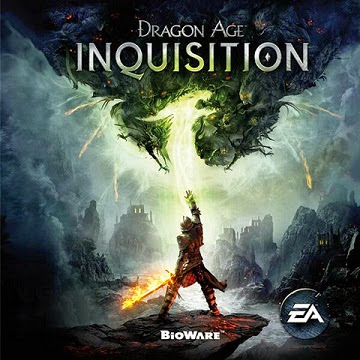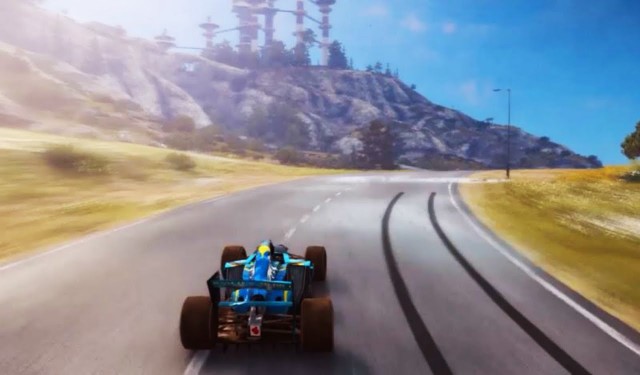

After years spent languishing in sub-par projects, Spyro the Dragon came back in a big and unexpected way at the tail end of 2011. Skylanders Spyro’s Adventure, which encompasses both a video game and a line of “toys with brains,” proved to be an enormous success for publisher Activision – it was the single best selling game from January through April of this year, and over 30 million Skylanders toys had been sold by March 31st, 2012. Naturally, a sequel was in order.
Skylanders Giants is that sequel. Once again developed by Toys for Bob, Giants introduces a new cast of characters, headlined by the titular Giants, who – both in-game and as toys – are more than twice the size of standard Skylanders. Is Giants a worthy follow-up to the groundbreaking Spyro’s Adventure? Read on for our full review of Skylanders Giants.
As practically any kid could tell you, a huge part of Skylanders’ allure is the Portal of Power, a neat little bit of technology that allows players to bring the Skylanders toys to virtual life within the video game. Simply place a Skylanders figure on the glowing Portal, and that character is zapped straight into the adventure. Progress and character customization is all saved right to the toy. Spyro’s Adventure players (and, equally likely, their parents) should be pleased to know that all the figures produced for that game will work with Skylanders Giants, though that welcome fact is unlikely to stop any fans from pining for the sixteen characters created specifically for the new game.
Players new to the Skylanders series will need to invest in a Starter Pack, which includes the Giants game along with a Portal of Power and three Skylanders figures: Tree Rex (a Giant), Cynder (a Series 2 Skylander, which is an updated version of a Spyro’s Adventure character) and Jet-Vac (an all-new character). The Skylanders themselves are separated into eight elemental groups: Tech, Earth, Air, Life, Water, Undead, Magic and Fire. Each of the sixteen chapters that make up Skylanders Giants is home to restricted areas that can only be accessed by characters of a specific elemental type.
Practically, this means that in order to experience everything that Giants has to offer, players will need to invest in at least five additional Skylanders figures, which range in price from $9.99 to $14.99 apiece. Minimally, that adds another $49.95 to the $74.99 cost of the Starter Pack. Yes, playing Skylanders Giants can be a costly proposition, though rest assured: there is a lot of game here, even for players restricted to the three Skylanders included with the Starter Pack.
It’s a sad truth of the games industry that many of the products aimed specifically at younger players are little more than uninspired, poorly designed, shoddily produced drek. Skylanders Giants stands clearly apart from that pack. As befits such a lucrative property, Giants is dripping with high-end production values – from its lush, colorful in-game landscapes to its attractive, detailed action figures.
Activision has clearly made a substantial investment in Giants, and it shows every step of the way. The game’s lilting score comes from Lorne Balfe, who has contributed music to the soundtracks of The Dark Knight Rises and Inception. Its cast of voice actors includes such recognizable performers as Patrick Warburton (Seinfeld, The Tick), Richard Steven Horvitz (Psychonauts, Invader Zim) and George Takei (Star Trek). Even the Portal of Power, which glows with changing colors as different characters are placed on it, demonstrates the level of care applied to the Skylanders experience.
The gameplay in Skylanders Giants is a mix of exploration, light puzzle solving and lots and lots of combat, often in enclosed arenas. Drop-in/drop-out co-op is supported throughout, and all players have to do is place a figure on, or remove a figure from, the Portal of Power. The real hook, though, is the game’s role-playing elements.
The Skylanders earn experience and level up, gaining access to upgrades that power-up their attacks. A simple skill tree makes the process a breeze, and helps players plot out how they’d like their characters to evolve. Of course, those upgrades must be purchased, which translates into lots of smashing things during the Story levels to collect the necessary funds. The Skylanders can be further customized with an assortment of goofy hats (the Bowling Pin is a personal favorite) that grant attack, health and defense bonuses. The drive to max-out a given character offers plenty of incentive to keep playing (and replaying) Giants long after the game’s story has reached its conclusion.
To the great credit of developer Toys for Bob, Skylanders Giants is a game that takes its audience seriously. All too often, kids’ games are simplified beyond belief (because developers underestimate how clever most kids actually are), or suffer from horrendous controls (because developers don’t believe that kids can tell the difference). Giants has snappy, responsive controls, and its difficulty is pitched perfectly.
Take Giants’ combat as an example: early in the game, mashing the attack button is both satisfying and effective. That doesn’t last too long, though. Enemies get tougher and tougher as players progress through the story, and suitable strategies must be devised. Granted, those strategies are often little more than “wait for the enemy to attack, then attack them,” but the game ups the ante by throwing multiple enemies – each with their own unique set of attack patterns – at the player simultaneously. Observation and reaction are key; sharp players will be able to truly master the game’s combat, and that sense of mastery is a reward too few kids games adequately provide. Skylanders Giants has it in spades.
The game’s downsides are apt to be more important to the parents in the house than to the kids playing Giants. Though smartly produced and considerate of its audience, Skylanders Giants is a game that is designed to sell toys (that are in turn designed to sell the game), and its blatant commercialism can be a sore point. Early on, players will find a “Soul Gem” (which unlocks a major upgrade) for a character that they most likely do not own. Giants then offers players a chance to “preview” that character, which in this case means “watch a slick commercial.” It’s a hard sell, and it happens again and again. Then there are the Skylanders’ catchphrases, which are (as far as I can tell) intentionally cheesy – Tree Rex warns adversaries to “be afraid of the bark,” Jet-Vac randomly shouts “hawk and awe” – but intentionally cheesy is still cheesy, and the catchphrases quickly become tiresome.
Finally, there is the sneaking suspicion that as good as Skylanders Giants is, it could have been just a little bit better. As the sequel to a hugely successful game, Giants is all but guaranteed to find an audience – probably a very large audience, at that. Why not pull out all the stops and make something dazzling and timeless? Case in point: the game’s colorful fantasy worlds are certainly pretty enough, but they’re also a little generic looking. For that matter, Giants’ story – basically, stop a mad man from taking over the world – won’t be winning any points for originality, either (though the game’s voice cast does elevate the material).
It’s not really fair to penalize Skylanders Giants for failing to be the Toy Story 3 of video games, but it’s only because what Toys for Bob has achieved is so good to start with that we want even more from them. There’s always next time, but until then, Skylanders Giants earns a solid recommendation.
Skylanders Giants is available now for the Wii U, Wii, Xbox 360, PS3 and 3DS. Game Rant played the Xbox 360 version for this review.
–
Follow me on Twitter @HakenGaken.



